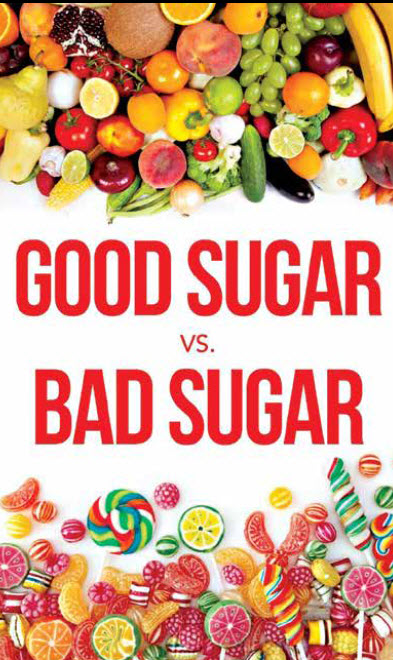Good Sugar vs. Bad Sugar – How To Make The Right Choice
 By: Nick Thomas
By: Nick Thomas
The new year has now officially set in and it’s time to make those resolutions really work. One of the best ways we can begin that new healthy-eating routine we promised we would is to avoid fad diets and really know the facts about what we put in our bodies.
Sugar is a huge issue in our food today which you probably already know, but what should we believe and what should we do about it?
So let’s distinguish between good sugars and bad sugars. Good sugars are naturally occurring in our foods, bad sugars are added to our foods. Our taste buds cannot tell the difference between naturally occurring sugars, which are found in foods such as fruit and dairy products, and added sugars, which manufacturers add to foods such as soda and candy. From a nutritional standpoint, however, there is a big difference between these sugar sources. Foods that contain naturally occurring sugar tend to be nutrient-rich, providing more nutrition per bite. Foods that have added sugars have little to no nutritional value being simply empty calories, therefore provide no benefit to our bodies.
Now that we have established the difference, how do we make the best choices for our daily nutrition?

Roughly 5% of our daily intake should consist of added sugars. If you are very active and exercise regularly, some sugar in your diet helps supply ready energy to fuel your muscles and keep your brain active. The biggest issue most of us have with this is the amount of processed foods we eat. We have to be hyperaware of the marketing we see and not trust what is on the front of packages, but actually read the nutrition facts.
Look at the carbs as sugars on the nutrition label. This will include both natural and added sugars. Less than 5g per 100g is low, more than 22.5g per 100g is high.
Check the ingredients list for glucose, sucrose, fructose, lactose, maltose, etc. These are all forms of sugar, as are honey, agave, molasses, and syrups (corn & rice). The higher up on the ingredients list these are, the more sugar the product contains.
A basic rule is to stick to the exterior of the grocery store isles, choosing mostly fresh foods. The less processed, the less bad sugar. However, when buying from those interior isles it’s best to avoid products labeled “sugar free” as they tend to contain artificial sweeteners like sucralose, saccharin and aspartame.
Keep carbs in check; things like white bread, rice, and pasta will contain more of those processed, bad sugars. Replace these with wholegrain options and balance this all out with lean proteins such as fish, chicken, and turkey which will help keep us full longer preventing extreme cravings.
Cutting sugar out of your daily routine will not be without struggle. The body has to adjust like it does to breaking any other addiction. Drink tons of water during this time. A dull headache may be experienced and cravings will most definitely be an issue! Go cold turkey and fight through it or have a few ounces of pure fruit juice to help. The symptoms will only last a few days, and soon you will be functioning with more mental clarity and be on your way to shedding those few extra pounds you wanted gone for 2019.
Nutrition plays a major roll in our overall health and how we feel on a daily basis. For a custom personal nutrition plan, contact Nick Thomas at (423) 805-0870 or nick.thomas78@yahoo.com
By: Nick Thomas, owner of Prime Performance Training, and Certified Sports Nutritionist